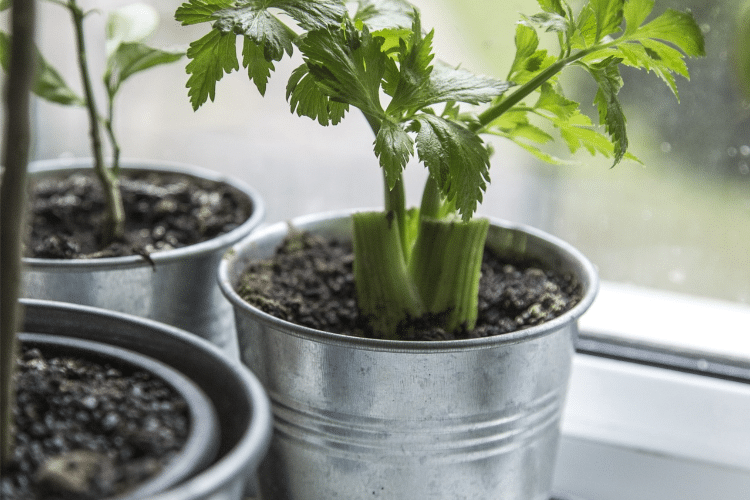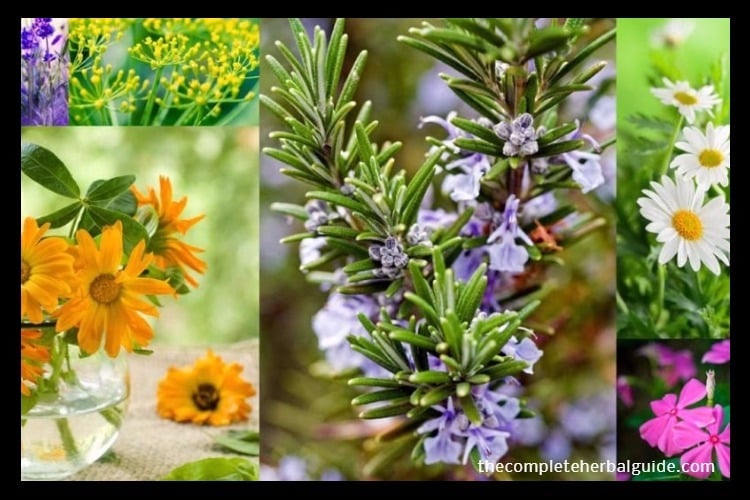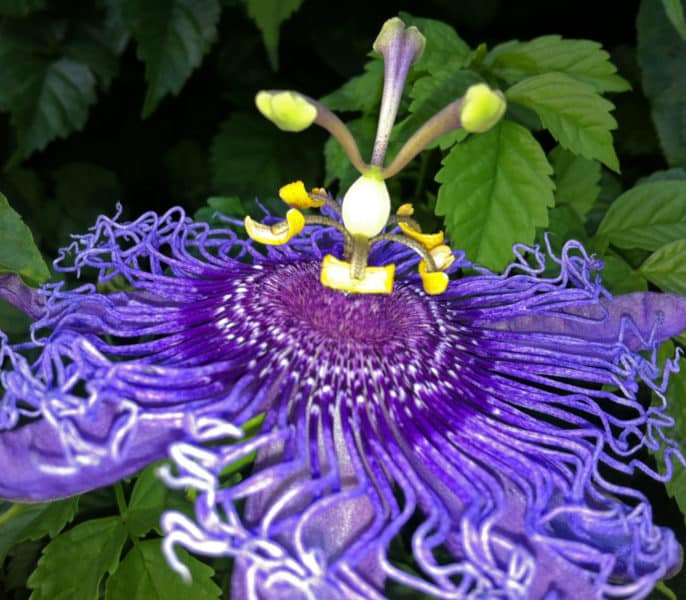
18 Scrumptious Fruits, Vegetables, and Herbs You Can Grow Indoors
by
Towards the end of the fall season, there’s a scramble to wind up the gardening chores. But even as the temperature dips, you can continue your food generating enterprise by shifting the venue indoors. Most homes are heated to a comfortably warm temperature range of 65 to 75F during winter. This is ideal for growing many vegetables, so the winter cold is not as much of an issue here as low light conditions. Your choice would be limited unless you provide sufficient grow lights to imitate the sunny outdoors.
All plants need a minimum amount of light to make food for their own use and some to spare for us. It is important to locate the veggies according to their light requirements. Even a sunny southern window may not provide sufficient light in winter to support vegetables that have a high light requirement. But if you can add some grow lights to compensate, and choose veggies that have lower light needs, you will have good results.
As a general rule, leafy vegetables can manage with much less light than root vegetables. Fruiting vegetables such as tomatoes and eggplants need more light to ensure a good yield. However, they can thrive in a toasty sunroom. Sprouts and edible fungi don’t much care for light, so they can be grown in the garage or basement. Try growing some of the following edibles indoors to ward off the winter blues and get your gardening fix this year.
Table of Contents
Tomatoes
Reserve the sunniest area in your house for tomatoes. Sow the seeds in a deep seed tray and transplant each seedling into a large pot when it has developed 5-4 true leaves. If you don’t want to stake the plants, grow them upside down. Pinch the tips of small branches to induce flowering. Provide additional lighting, if required. When grown indoors, cherry tomatoes seem to do better than larger varieties.
Bell peppers
With a sufficient amount of lighting, bell peppers can give a good yield when planted in rich, well-draining potting mix. Pinch the growing tips to encourage bushy growth which will be translated into a good fruit set later on.
Potatoes
You need large plastic bags for growing potatoes indoors. Fill them with good quality potting mix and plant the potatoes. Potato plants need 5-6 hours of sunlight to give you a satisfactory yield. You can check for baby spuds and use them in your cooking instead of waiting for the tubers to mature.
Beans
If there is enough light, beans and peas can produce pods indoors. Bush beans are the best for indoor cultivation as you don’t have the hassle of providing support for pole bean varieties. Harvesting is also much easier.
You might need several plants to get enough produce for a dish. Choose high yielding varieties to improve your chances of getting a substantial crop.
Carrots
Carrots can be grown indoors in deep pots with loose, well-draining soil. The feathery, fern-like carrot greens make the good interior decoration as well. If you can provide about 4 to 5 hours of bright sunlight or its equivalent in grow lights, you can get good carrots, but if the light is compromised, the roots remain small and they take longer to develop.
Choose round varieties for the indoors and plant the seeds well apart to allow room for the roots to develop. Keep them in a cool spot to get sweeter carrots. When the roots are ready, their tops can be visible above the soil.
Radishes
Radishes are one of the most rewarding veggies to grow indoors during winter. For one thing, they form table worthy tubers in as little as 25 days, so you can have a regular supply if you start weekly batches back to back. The slightly spicy flavor of radishes is ideal for winter dishes. Radish greens are just as delightful as micro and baby greens.
Sow the radish seeds in straight rows in 5” deep trays of rich, well-draining soil and compost mixture and cover them with a paper until they sprout. Move them to a sunny spot when the cotyledons come up. You can thin out the seedlings when 2-3 true leaves appear and use them in salads as microgreens. You can continue to pick tender leaves if you don’t mind getting smaller bulbs.
Spinach
Out in the garden, spinach does best in partial shade and gives a continuous supply of leaves. The same can be replicated indoors by growing it near a window where it will get 3-4 hours of sunlight. Select a cool spot since spinach has a tendency to bolt in the heat. Keep harvesting the outer leaves to encourage the plant to produce new leaves. Spinach can be grown successfully under grow lights too.
Lettuce
You can grow different varieties of lettuce indoors. They need no more than 3-4 hours of dappled sunshine through a sunny window. The loose-leaf varieties are ideal for indoors as you can pick the outer leaves for a long and continuous harvest. Lettuces can adjust very well to growing exclusively under artificial lights.
Kale
Kale is cold hardy to a great extent, but hard frosts can kill it. Each plant needs a large pot and plenty of room to grow and spread. A location where it gets 3-4 hours of bright light would be ideal. The crinkled leaves are a storehouse of nutrition, but they don’t grow very large in plants grown indoors. Nevertheless, they are just as tasty and highly nutritious.
Swiss chard
These colorful plants would be a cheerful addition to your home’s ambiance, but they need 4-5 hours of sun to produce long stalks in rainbow colors. Indoor chard plants are much smaller, but you can harvest the leaves all through winter. Use the older ones in stir-fries and the tender ones raw in salads.
Arugula
This salad green with a sharp taste is a high yielder even when grown indoors. The large rosette resembling dandelion can give a continuous supply of leaves. The more you cut, the more it grows. Arugula is a cool-season plant and tends to bolt earlier if grown in a warm spot. Out in the garden, flowers borne on long stalks indicate the approach of warm weather. To avoid early bolting and extend the harvest, you need to find a cool, yet sunny spot for this plant.
Scallions
This vegetable of the onion family commonly called bunching onions is grown mainly for the leaves. It is available in shops as small bunches of greens carrying immature bulbs, but when you grow them at home, you can just snip off the greens. Onions have a long growing season, so it is a good idea to grow scallions in containers that can be kept outside until mid-fall and then shifted inside as the temperature falls. This ensures a regular supply of green onions throughout winter.
You can grow scallions from seeds or sets available in season, but if you can’t find either, the small bulbs of the scallions bought from the shop can go into the soil to make new plants. Choose deep and wide pots as onions have deep roots and the clumps quickly increase in size. They may need frequent watering, but good drainage is essential.
Chives
Chives are cold-hardy plants that revive themselves in spring even though they take a beating at the height of winter. You can have a pot of chives in your kitchen during the colder part of the year.
If you have chives growing in the garden, you can plant just a few divisions of chives in a pot of well-draining soil and bring them indoors. Since they make bigger clumps as they grow, you will be assured of ever-increasing supply as you snip off leaves for your cooking.
Oregano
This perennial herb with thin trailing habit and tiny leaves is great to have at hand in any season. But they can be quite invasive in the garden, so they are better off restricted to containers. You can give one or two oregano pots a permanent place on your kitchen window sill where they can enjoy a bit of morning sun. They will thrive happily in the warm indoor air when it is freezing outside, and provide you with enough herb for all your culinary needs.
Oregano can be grown from seeds, but since many herbs go by the same name, it is better to get a nursery-grown plant. You can start more plants from this stock. Pinch the plants often to keep them busy.
Mint
This herb prefers shade, hence it is ideal for growing indoors. The plants can be started from seeds as well as from sprigs of mint you buy from the shop for culinary use. Mint prefers rich, moist soil. A single pot can keep you in plenty of herbs throughout winter.
The leaves can be used to make a flavorful mint tea that can calm an upset stomach. Sprigs of mint can be added as a garnish to almost any dish. Just brush your hands across the plant for a quick pick-me-up anytime.
Sprouts
Sprouts are highly nutritious edibles that anyone can grow in their home. To make these crunchy treats, edible seeds soaked in water are kept in a warm, dark, and humid environment for 3-4 days, rinsing them in plain water several times during this period to avoid fungal and bacterial diseases. When the seeds germinate and put out cotyledon leaves, the baby plants are eaten whole, roots and all.
You can make your sprouts from several types of pulses such as lentils, green gram, and garbanzo beans. Oilseeds like sunflower, mustard, and flax seeds can be sprouted. The seeds of all salad greens and most herbs are also used to make flavorful sprouts that can be added to soups and salads.
Microgreens
To make these edibles, seeds of salad greens and a few other veggies are sown and allowed to grow for 2-3 weeks or until they develop at least a set of true leaves. When they are ready, only the part above the soil is harvested for use. They are extremely flavorful and rich in nutrients.
You can start your microgreens mixes from readily available seed mixes or make your own. Seeds of the cabbage family, beet family, and salad greens will give you microgreens to suit your taste.
Mushrooms
Mushrooms can be grown indoors not only in winter, but it is an enjoyable activity when outside gardening activities come to a standstill in the chilly weather. Growing button mushrooms or oyster mushrooms from ready-made kits are extremely easy. All you need to do is water the medium as instructed and keep it in a cool, dark place to develop. You can have several harvests from the same bed.
Once you get sufficient experience with the kits, you can move on to preparing your own mushroom beds and just source spawn to start the culture.







